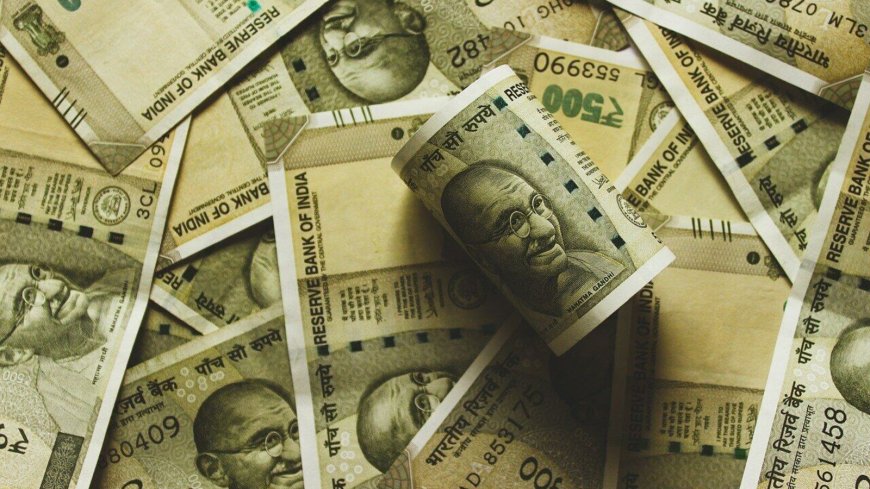Rupee Hits Two-Week High as US Dollar Weakens Following Trump’s Criticism of Fed Chief Jerome Powell
The Indian rupee climbs to a two-week peak against the US dollar following former President Trump's attack on Fed Chair Jerome Powell, sparking dollar weakness and emerging market currency rallies.

The Indian rupee surged to a two-week high against the US dollar on Thursday, driven primarily by a broad-based weakening of the greenback after former US President Donald Trump launched a sharp attack on Federal Reserve Chairman Jerome Powell. The dollar’s decline has reinvigorated emerging market currencies, including the rupee, which rallied amid improved risk appetite and positive domestic factors.
US Dollar Retreats Amid Fed Chair Controversy
The US dollar index, which tracks the greenback against a basket of major currencies, fell nearly 0.8% on Thursday, marking its largest single-day decline in over two weeks. The slide was largely triggered by comments from Donald Trump, who publicly criticized Powell’s monetary policy approach, accusing the Fed chief of “over-tightening” and stifling economic growth.
Market participants interpreted Trump’s remarks as increasing uncertainty around the Fed’s future interest rate moves. This uncertainty dampened demand for the US dollar, traditionally seen as a safe-haven asset during times of geopolitical or economic stress.
Sanjay Mehta, Senior FX Strategist at Axis Bank, commented:
"The dollar’s decline is a reaction to rising concerns about the Fed’s direction, compounded by political rhetoric from influential figures. This has created a risk-on sentiment globally, benefiting currencies like the Indian rupee that are closely tied to emerging market flows."
Rupee Benefits from Weaker Dollar and Domestic Factors
The Indian rupee gained 0.5% to close at 82.40 against the US dollar, its strongest level since early June. The rupee’s rally was also supported by robust foreign inflows into Indian equities and bonds, as investors sought higher yields in a global environment marked by growing doubts over US monetary tightening.
Domestic economic indicators have further bolstered the rupee. Recent data showed India's GDP growth accelerating in the first quarter, surpassing market expectations, alongside improving trade balances due to rising exports. Additionally, the Reserve Bank of India’s stance on calibrated rate hikes has reassured investors about monetary policy stability.
Radhika Sharma, Chief Economist at ICICI Securities, noted:
"The rupee’s strength is a combination of external and internal factors. While the dollar’s fall set the stage, India's resilient economic performance and steady capital inflows have provided strong support."
Market Context: Emerging Markets in Focus
The dollar’s retreat has ignited a rally among several emerging market currencies, which typically weaken when the dollar strengthens due to capital outflows. The Brazilian real, South African rand, and Turkish lira all recorded gains, mirroring the rupee’s upward momentum.
This trend comes amid cautious optimism about global economic growth, despite persistent inflation concerns. Investors are recalibrating expectations of US Federal Reserve policy, weighing the impact of political pressure on the Fed and possible delays in interest rate hikes.
Ankit Desai, Head of Emerging Markets Research at CLSA, remarked:
"Emerging market currencies are poised for further appreciation if the dollar continues to lose ground. However, geopolitical risks and domestic vulnerabilities remain, so investors need to remain selective."
Impact on Indian Markets and Investor Outlook
The rupee’s appreciation has been welcomed by Indian importers, particularly those in the oil and commodity sectors, as it reduces the cost of foreign purchases. Conversely, exporters might face some headwinds due to less competitive pricing abroad, though the overall impact remains manageable given diversified export portfolios.
Indian equity markets responded positively to the rupee’s strength and the supportive global backdrop. The benchmark Nifty 50 index closed up 0.7%, led by banking, IT, and export-oriented sectors.
Vikram Singh, Portfolio Manager at HDFC Mutual Fund, said:
"The current environment favors Indian assets, especially as the rupee stabilizes. For investors, this could be a good entry point to increase exposure to India, but one must watch for volatility in global monetary policy."
What Lies Ahead?
Looking forward, the rupee’s trajectory will depend on several factors: developments in US monetary policy, geopolitical tensions, and India’s domestic economic performance. If the Fed signals a slower pace of rate hikes or even pauses, emerging market currencies like the rupee may sustain their gains.
However, risks remain. A resurgence in US inflation or hawkish comments from Fed officials could revive dollar strength. Additionally, India’s trade deficit and fiscal position will be key monitors for currency traders.
Sanjay Mehta concluded:
"The rupee's recent strength is encouraging, but investors should remain cautious. A balanced approach, keeping an eye on global and domestic cues, is essential for navigating the currency markets in the coming months."
Summary
-
The Indian rupee surged to a two-week high at 82.40 against the US dollar.
-
The US dollar weakened sharply following criticism of Fed Chair Jerome Powell by Donald Trump.
-
Emerging market currencies rallied amid improved risk appetite.
-
Domestic economic data and steady capital inflows supported the rupee.
-
Indian equity markets reacted positively, with sectors like banking and IT leading gains.
-
Future rupee movement will hinge on US Fed policy, global economic conditions, and India’s macroeconomic health.
What's Your Reaction?
 Like
0
Like
0
 Dislike
0
Dislike
0
 Love
0
Love
0
 Funny
0
Funny
0
 Angry
0
Angry
0
 Sad
0
Sad
0
 Wow
0
Wow
0













































































